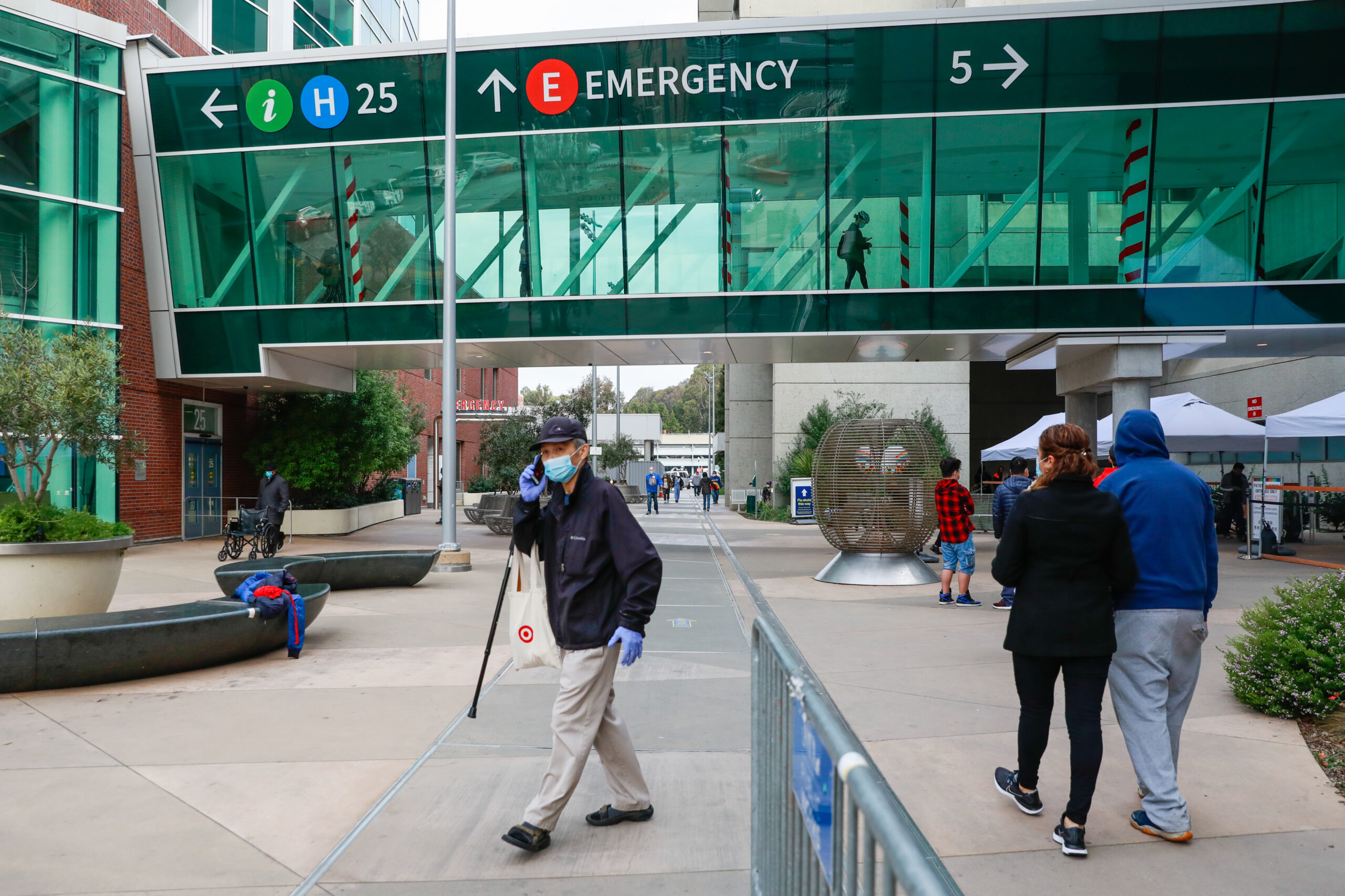Covid is once again on the rise, and most infected San Franciscans might not even know they have it.
Roughly 1 in 20 people who come to UCSF hospitals are now asymptomatic and testing positive for Covid, according to public health expert Bob Wachter. Though the sample is not random, Wachter and other experts say that this data helps provide an idea of community risk.
The latest wastewater data also shows more Covid is around than official case reports indicate: Covid matter found in sewage plants across the city and in the East and South Bay skyrocketed in November to levels not seen since July’s outbreak.
Hospital beds have also started to fill up, with 90 current Covid-related hospitalizations across city hospitals—up roughly 40 patients from the beginning of November. In fact, the triple threat of the winter flu, spreading RSV and Covid means that three hospitals in SF currently have intensive care units nearing capacity, with occupancy rates above 90%.
And though SF is one of the state’s most vaccinated counties in terms of receiving the baseline two-dose series, less than one-third of San Francisco residents have received the second booster dose.
The combination of high asymptomatic positivity, high Covid levels in city wastewater, rising hospitalizations and low booster rates have experts concerned about a Covid sneaker wave ready to break this winter.
SF Booster Rates Stagnate
Experts say that the latest bivalent Covid vaccine provides the best protection against symptomatic infection—but just a fraction of the city has opted to get the newest jab.
About two-thirds of city residents have the first booster, while only 29% have gotten the most recent one.
Older adults lead the way in vaccination rates: Roughly half of San Franciscans between 65 and 74 years got the second booster, compared with just 22% of teenagers.
“I’m always worried about seniors,” said Peter Chin-Hong, an infectious disease specialist at UCSF. He added that patients over age 65 who were vaccinated—but not boosted—were most at risk of contracting and dying of Covid.
Researchers expect a winter Covid surge will be exacerbated by the spread of other infectious diseases in SF, as indicated by the asymptomatic positivity rate data from UCSF. The respiratory illness RSV, in particular, has raised alarm bells for parents of young children and elderly San Franciscans, alike.
“We track how many people are turning positive for all of the viruses,” said Chin-Hong. “Just to give you some perspective, flu [positivity] went up 12 times between early November and now.”
He says that UCSF and other infectious disease experts are now focusing on vaccine statistics, as well as wastewater data, asymptomatic positivity rates and hospitalizations, as key indicators of Covid’s current impact on SF.
As Bad as Past Years?
Despite worries about these Covid indicators in San Francisco, health experts maintain that 2022’s winter wave may not be as deadly or severe as in years past.
San Francisco shows a smaller, less steep Covid surge than the rest of the state. California has reported a 75% increase in positive Covid tests in the last two weeks—compared with a -1% change in positive tests in SF—and the statewide test positivity rate is 11%.
And though Chin-Hong warns that the state’s positivity rate for influenza places it within the top 10 in the country, advancements in both prevention and treatment offer health officials more buffer room than earlier in the pandemic.
Flu data out today. Holy crap. pic.twitter.com/vkDnmgWPJz
— Katelyn Jetelina (@dr_kkjetelina) December 2, 2022
“The new trends this year are that people are coming in sick with RSV—for older adults—and with influenza,” said Chin-Hong. “Even with those two things, I don’t think it’s going to approach where we were over the last two years because we have not only vaccines and boosters, but we have actual [Covid treatments] available.”
How Risky Is That Office Party?
Covid’s secret surge means San Franciscans are more exposed to Covid today than they’ve been since July.
Based on the asymptomatic positivity data from UCSF, most public gatherings now carry some level of exposure risk. Going to a holiday gathering with 10 people? Your risk of being there with someone Covid-positive jumps up to 40%. Jetting off to the Bahamas for a winter getaway? Your risk on a 150-person airplane shoots to 99.9%.
With holiday travels, indoor gatherings and office parties coming up, experts are urging San Franciscans to mask up and get boosted.
“Cases of Covid-19, flu and respiratory syncytial virus (RSV) have been increasing in San Francisco, following state and national trends. With the holidays approaching and indoor activities resuming, San Franciscans are urged to protect themselves and others, and especially young infants and older adults,” said the SF Department of Public Health in a statement.
Resources for the Disease-Cautious San Franciscan
While you may not have to cancel your holiday plans this year, you may want to take a few extra precautions to avoid spending the holidays in bed with a fever. In addition to getting the latest booster, it’s probably time to mask up on transport and inside other crowded places. Here are additional resources for disease-cautious readers.
Want to know how influenza is spreading around the Bay Area and in the country? Check out the CDC’s handy flu map here.
Want to know which parts of San Francisco are more vaccinated than others? The city’s got some data and maps for you here.
Want to travel without fear this winter? The city health department has a list of Covid safety resources you can find here.
Want to get a first (or second, or third) jab? Click here for a list of locations where you can get your Covid booster today.
Feeling sniffly? Want to take a Covid test before that holiday office party? Find a list of testing resources here.
Want to know how many cases and hospitalizations San Francisco currently has? Take a look at the city’s records here.
Feel like crunching the numbers yourself? You can find updated wastewater data here.
